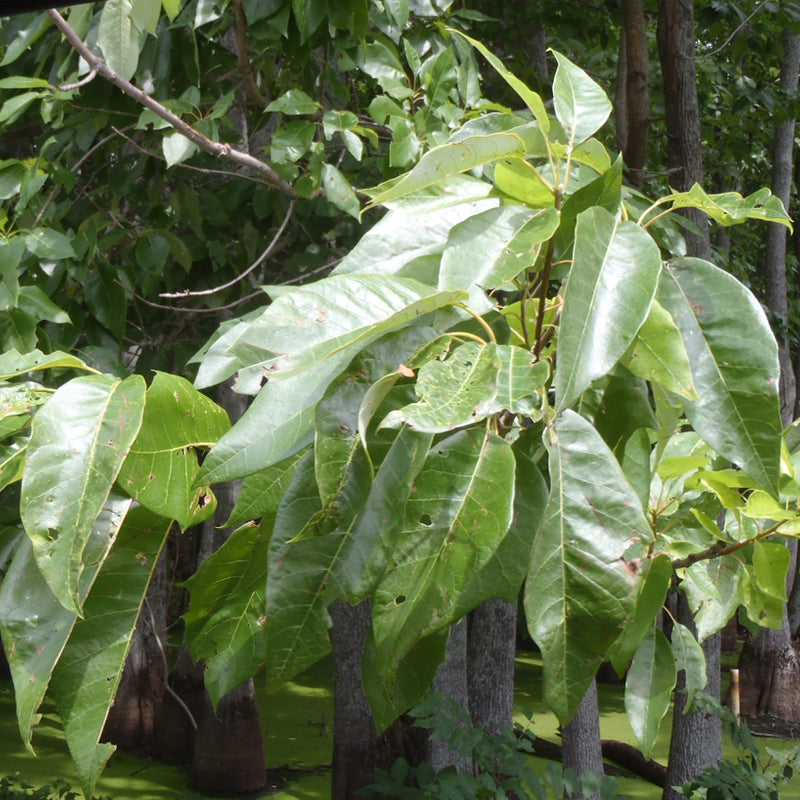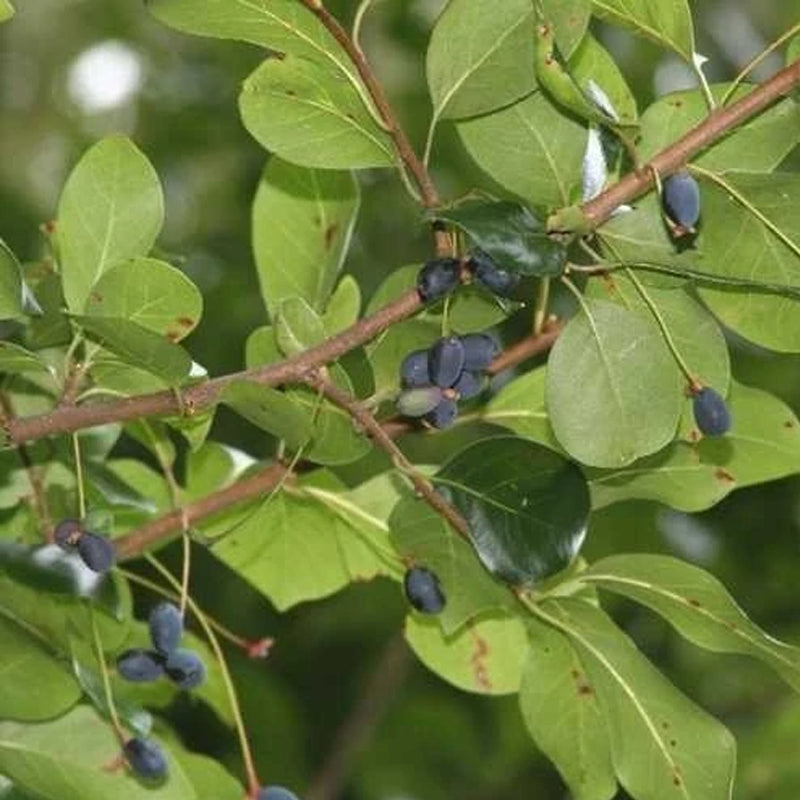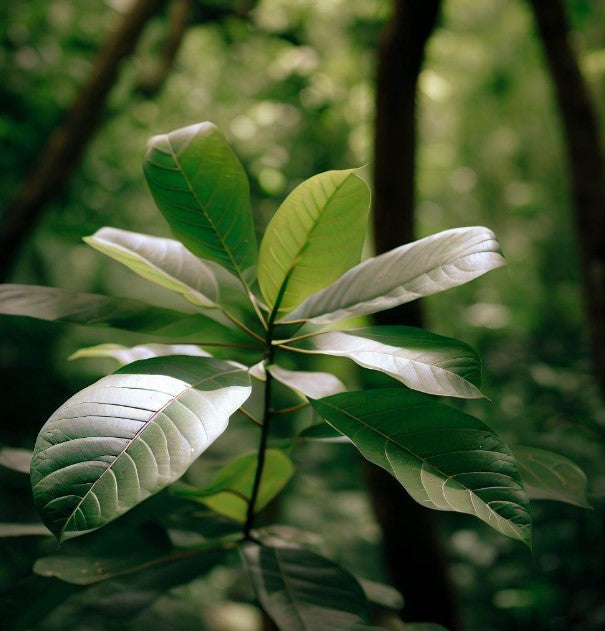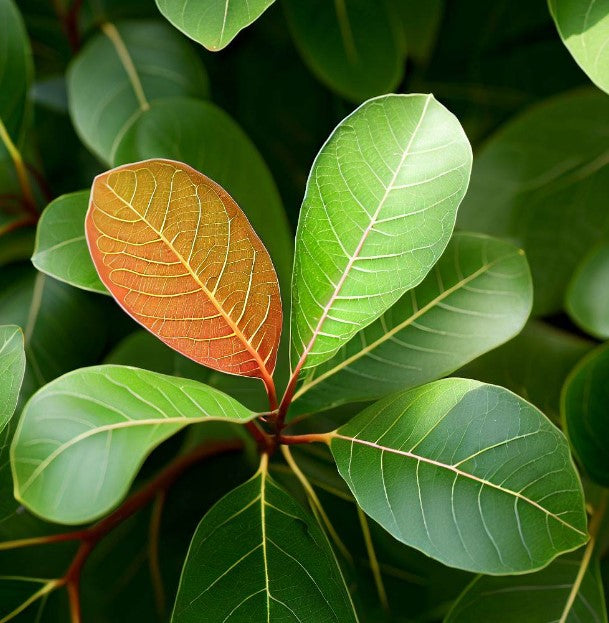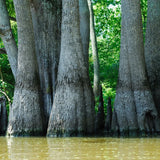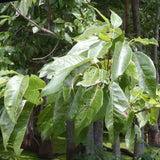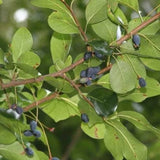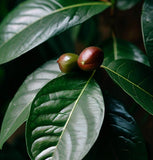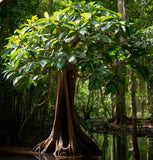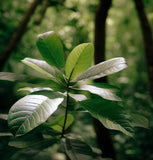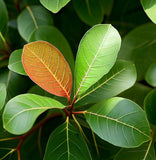Nyssa aquatica (Water Tupelo)
Nyssa aquatica (Water Tupelo) is a deciduous tree native to the southeastern United States. It belongs to the genus Nyssa, which includes several species commonly referred to as tupelos. Here are some key features and characteristics of Nyssa aquatica:
Appearance: Water Tupelo is a large tree that can reach heights of 60 to 100 feet (18 to 30 meters) or more. It has a straight trunk that is often swollen or enlarged at the base. The crown is typically conical or pyramidal in shape. The bark is gray and develops deep ridges and furrows with age. The leaves are alternate, simple, and elliptical in shape, with serrated edges. They have a glossy dark green color in summer and turn shades of yellow, orange, and red in the fall.
Habitat and distribution: Water Tupelo is primarily found in low-lying wetland areas, such as swamps, floodplains, and along the edges of rivers and lakes. It is most commonly distributed in the southeastern United States, particularly in coastal plains and bottomland forests.
Tolerance to water: As the name suggests, Water Tupelo is adapted to wet and flooded conditions. It can tolerate long periods of standing water and is well-suited for swampy or poorly drained soils. It is often found growing in areas with periodic flooding.
Flowers and fruits: Water Tupelo produces small, greenish-yellow flowers that are borne in clusters. The flowers are typically pollinated by insects. Female flowers give rise to fruits known as drupes, which are oval-shaped and bluish-black when mature. The fruits are a food source for birds and other wildlife.
Environmental benefits: Water Tupelo has ecological importance in wetland ecosystems. It provides habitat and food for various wildlife, including birds, mammals, and insects. The tree contributes to soil stabilization, water filtration, and nutrient cycling in wetland areas.
Timber and uses: The wood of Water Tupelo is lightweight, durable, and resistant to decay, making it suitable for various applications. It is used in boat building, furniture making, and as lumber for general construction. The tree also has cultural significance and has been used by Indigenous communities for traditional purposes.
Growing conditions: Water Tupelo is generally hardy in USDA hardiness zones 5 to 9. It prefers full sun to partial shade and moist to wet soils. It can tolerate periodic flooding but does not perform well in dry or upland conditions. Regular watering during dry spells or droughts is beneficial, especially for young trees.
Botanical Name : Nyssa aquatica
Common Name : Water Tupelo
Height : 125 ft
Spread : 50 ft
Germination Info : 60-90 days cold moist stratification recommended.
Hardiness zone : 6-9
Average seed per ounce : Approx. 44


